Defining Moments - Nick Gordon Brown
- PHC - JayDobie

- Dec 31, 2019
- 25 min read
Updated: Feb 21, 2020

With the perhaps surprising return in 2018 of the legendary Stress label, I decided to do a piece for the blog on the heritage of the iconic label, drawing on various adverts, articles and sleeve notes that so richly describe the importance of such an important main player. I happened to mention this within the PHC Facebook group and started talking to Nick Gordon Brown formerly of Mixmag who alongside Dave Seaman manned the good ship Stress for ten years . Nick is a hugely knowledgeable guy who played a massive role in the development of UK house music, he was good enough to offer a wealth of knowledge to accompany this particular piece but after a short while it was decided that we could maybe make this interview... fast forward a couple of months and here we are. Thank you Nick.
Firstly, how did you first get into dance music? Glam rock was my first love as a kid, and I guess I came of age musically with punk & new wave in the late 70s, but throughout that period I always liked dance music, and was buying plenty of soul, funk & disco as well. This only increased when I went to uni, discovered clubbing, and started DJing a bit. It was the classic early-mid 80s ‘alternative club’ soundtrack, lots of Talking Heads and B52s, a bit of goth (Sisters of Mercy used a drum machine and always had a floor-friendly 4/4 beat!), punk classics, some northern soul and rockabilly chucked in, even Gil Scott-Heron – really eclectic looking back on it. Every UK city had a club or two like that at the time. Crucially, I got big time into electronic acts like New Order and Cabaret Voltaire, and from there quickly made the connection with early electro records like Hashim’s Al-Naafiysh, still an all-time favourite and in many ways a precursor for house. George Clinton’s electronic tracks Atomic Dog and Loopzilla were also very important in the way they were big in both alternative and soul clubs. I was at uni in Hull and could get pretty regular gigs there, it’s a relatively small city so the student and local crowd mixed well at the alternative clubs because we needed each other to make nights viable. It had a really good music scene at the time too, with the Housemartins and Everything But The Girl being the ones who eventually broke out nationally. However, I decided to move on, and quickly discovered that, back then, just like now, DJing could be very much who you knew not what you knew. I knew no one so got nowhere fast!

Where did your involvement in the dance music industry start, I see you were involved in Disco Mix Club (DMC), was this the beginning? No, I was involved a good few years before that. I’d decided I was set on “a career in the music industry”, so I got a job in a record shop. This was the Our Price chain, which was huge in the south of England at the time, but unlike some of the bigger chains, had quite an independent feel, so you still felt you were working in the local store, not for a corporate. The only frustration was not being able to stock imports, but other than that we were given a lot of leeway as buyers if we could prove that we knew what would sell locally. They moved you around stores and there were interesting little local differences. There’s the old story about how the north of the UK got house music before the south – certainly when I worked in inner city branches like Lewisham and Streatham, the early house stuff was a poor relation sales-wise compared to hip hop and reggae; but as you edged into the suburbs, Bexleyheath and Bromley (where I’d grown up), it was massive straightaway – this was around the time of labels like FFRR and Champion picking up Jack Your Body, all the early Todd Terry tracks and so on. If we were working in a ‘chart return’ branch (the ones whose sales counted towards the Top 40), we got record company reps coming in all the time offering us deals and freebies (the Trouble Funk sweatshirt was a beauty!), and I thought this seemed like a glamourous life, and an obvious next step up the ladder. Unfortunately, I kept failing my driving test, but I did manage to get a gig with one of the main independent promotion companies, Impulse, doing telesales. I was employed as a ‘dance specialist’, which meant pre-selling stuff to all the coolest dance stores around, from Bluebird and City Sounds in London to Spin Inn in Manchester, 23rd Precinct in Glasgow and so on.
Then I got my lucky break when the bloke who did club promotions (ie mailing out pre-release promos and white labels to DJs) unexpectedly left and they moved me over. Fate then dealt me a couple of very kind hands. Firstly, a DJ on the mailing list walked into the office one day with a copy of Helyom Halib by Cappella. He was the UK rep for a Spanish label who’d signed it from Italy’s Media Records for the rest of Europe. He asked me to promote it, and it blew up big time as it was one of those tracks that was just cool enough for the serious house DJs to play, but just accessible enough for some of the DJs in high street clubs too. It charted high with no radio support, just off club play, so we got a lot of the credit. Impulse were doing other promotion for Factory Records. Lucky break number two came when Tony Wilson phoned my boss and said, “we’ve got these house mixes done on New Order, can your club promo guy send them out?”. These were the Kevin Saunderson mixes of Round and Round and the Steve ‘Silk’ Hurley mixes of Fine Time. As a long-time New Order addict who was now obsessed with house, you can imagine how this felt! But better was to come. This led to me promoting the Happy Mondays Wrote For Luck remixes…then off the back of that Creation called us up, said we’ve got these Andy Weatherall mixes of Primal Scream (Loaded), and Factory have said you’re the people we should use to get it to the clubs…this in turn led to me going to Silvertone (a sub-label of Jive Records, who behind the scenes owned Impulse), and telling them we could do a similar job with Fool’s Gold by the Stone Roses. Suddenly, from nowhere, I was Mr ‘Indie Dance promoter’, but off the back of Cappella, was promoting tracks like Sueno Latino too, so I was also Mr Italo house. This meant tastemaker DJs wanted to be on our mailing list, and I got friendly with loads of them just as they were becoming well known. There were a few who used to ‘phone up regularly for a chat and we’d chew the fat for ages about what they were up to locally – in particular, I remember talking weekly to Kelvin Andrews (Golden / Stoke), Orde Meikle (Slam / Glasgow), and John Digweed (still DJ JD from Hastings at this stage).
How did the links to DMC and Mixmag initially come about? When I got the club promo role, that meant I got the monthly DMC mix package sent through. At this time, I found it pretty hit & miss to be honest, but I liked the magazine newsletter, Mixmag. It seemed a lot more cutting edge than a lot of the mixes because they had this really young lad called Dave Seaman editing it. He also dug quite a few of the records I was sending out, we hit it off, and he gave me the chance to write a regular monthly column about whatever I liked (which I did under the Atomic Dog pseudonym in honour of George Clinton). We hooked up properly in late 89 at the Southport Soul weekender not long after Mixmag had gone public and was available in newsagents, with Dave getting a lot of press as the UK’s youngest magazine editor. Early in 1990 he said he had been given the budget to bring in an assistant editor and did I fancy it? I jumped at the chance.


Where did the idea for Stress come from? How did it all get started and what did your position involve at the label? Dave & I were living and breathing Mixmag, but we also loved hanging out in the studios of the DMC building and seeing how the producers worked. The nature of DMC meant there were DJs wandering in and out all the time, lots of them had ideas they wanted to try out in the studio, so we started getting involved in the DMC mixes as a sideline, suggesting ideas to the in-house producers and getting some DJs we liked, such as Graeme Park, in to do mixes. A logical follow on seemed to be for some of these DJs and producers to start making tracks, and it seemed equally logical for us to start a label to release some of them rather than always shopping them around. By this time Dave had got the Shelley’s gig with Sasha, and was getting a serious rep as a DJ; and even more so as a producer & remixer, having hooked up with DMC producer Steve Anderson as Brothers In Rhythm. Meanwhile, with a background in promotion & retail, it made sense for me to get more and more involved in managing this fledgling label. So, we agreed with DMC that we’d move on from Mixmag and make a go of Stress. We suggested a couple of our regular freelancers, David Davies and Dom Phillips, took over our editorial roles. They did a pretty good job!
Can you give us some idea of a typical day at the Stress offices back in the early nineties? For me it was pretty much 50% A&R and 50% admin. The latter normally came first cos I was always in earlier than Dave! I’d be point of contact for our distributors and press people, I liked getting involved with the legal bods too, I got more and more interested in licensing deals and artist contracts. A&R wise, through Mixmag links, DMC’s worldwide branches and DJ / producer network, our contacts at import shops etc, there were very few records we didn’t hear. We soon settled on a broad theme of “a label for DJs & clubbers run by DJs and clubbers,” and tried to find records to fit. In the early days there was no talk of genres, sub-genres, brand-building or any of that – it was just putting out records we liked by people we liked and trying to do them justice. A big change to the routine came in 95. Through my partner’s job we got the chance to move to Nottingham. After an almighty battle with the powers that be at DMC, they eventually relented and agreed I could work Fridays from home (this was years before remote working became commonplace). I always made sure there were plenty of faxes waiting on the machine for when everyone got in, to prove I was hard at it. I stayed down south one or two nights a week, and frequently worked late nights and early mornings – I was totally obsessed with the label by this point. Over the next year or two we had a lot of success, and I think this was a factor. More so, however, was the team Dave & I were building up: Sara Rowley as my sidekick, John Reed doing business affairs, and Chris from Chris & James coming in to bolster A&R and promo. Names some of your readers may know, like Bill Brewster, Austin Wilde and Nick Darby, also played a part; and when Anthony Pappa moved to the UK, he came on board too. DMC producers like Steve Anderson (BIR), James Wiltshire (aka Jimmy Gomez) and Alan Bremner (Freefall) meant we had even more finely tuned pairs of ears happy to help. It was a bloody great team, we all got on and were completely dedicated to the label.

You partnered Pete Shelley as part of Route 66 and had a couple of releases on the label. Did you enjoy the production side of things or were you more driven with the label management and development of artists and sound on the label? Haha, Pete Shelley wasn’t my studio partner, though that would have been a dream come true as he was leader of one of my favourite ever bands, Buzzcocks. When we made Revolution, I stole revolution-themed lyrics from the Beatles, Gil Scott Heron and Buzzcocks.

We bottled it a bit and made slight changes to the Beatles and GSH steals (like they were ever going to notice), but kept the Buzzcocks ones intact, and also sampled a Buzzcocks drum solo – so we just gave them a chunk of the publishing – it was worth it for me as I could say I had a co-write with one of my musical heroes. I actually did all the Route 66 stuff with Mike Gray (now better known as Michael Gray) from Full Intention. He is of course renowned as a disco house producer – but he’s brilliant around a studio, and behind the scenes engineered for all sorts – the most relevant ones to this group being DOP on Guerilla! I loved doing it, but frankly it was a time thing. I’d made a commitment to being label manager and it was a full on job…Mike was also becoming very successful so had limited studio time to offer up…and I didn’t want our artists thinking I was too busy trying to make my own tracks (it was a completely different situation to Dave’s, as BIR were well established before Stress even started, and the BIR link was very much a positive for the label). Revolution was the best received thing we did, and I think it’s because it was the only one we really spent as much time on as we wanted to. It was still a buzz when Marcus Stubbs uploaded that mix on PHC recently and opened with it.

Stress is well known for releasing a host of tracks that have now gone on to be regarded as classics. Who made decisions on the licensing policy and artist roster? Early on Dave & I agreed we wouldn’t sign anything we hadn’t both fully committed to. Initially it was a mix of tracks made in-house at DMC (eg PKA, Creative Thieves, Brothers Love Dubs); and stuff we licensed in and unleashed our favourite remixers of the moment on (Voices of 6th Avenue, Last Rhythm, Rusty, Kathy Brown). Other producers who worked on DMC started offering us stuff (eg Hustlers Convention, later Full Intention; Chad Jackson as Reefa!); and we started trying to persuade DJ friends to make tracks for us (this is how Bedrock came about; it’s also rarely remembered that we put two early singles out by future techno don Dave Clarke). Then, as we got a rep, we started to get sent more and more demos, and this is where what I guess you could call ‘phase 2’ started, signing and trying to develop artists (Sunday Club, Coyote, Chris & James and so on). Chris Day deserves a lot of credit too, he was really on it with spotting new talent, and took a lot of the weight as Dave & I got ever busier.

If we asked you to pick out three tracks that came into the Stress office, that you all thought WOW we have to put that out. What would they be? Sunday Club’s Paladian Dawn and Palefield Mountain’s On My Way both came in on demo cassettes and we made the call immediately. Similarly, Moods by Desert, they’d done a few test pressings, Dave got sent one of them, and we jumped on that straightaway too. We should also mention acts we signed without hearing any demos, who delivered from the off, such as Bedrock with For What You Dream Of, Chris & James with Club For Life and Freefall with Skydive.

Back in the nineties Stress seemed to be one of the first labels to have its own successful merchandise range, T-shirts, jackets, slip-matts, record bags. How helpful do you think it was in creating Stress as a brand?
That was a big advantage of being owned by DMC, they had a very well-established merchandise division (including exclusive rights to Technics-branded gear) – so we already had suppliers in place. Working in that environment, it just seemed to make sense to do it – it was only when it started to do really well that it dawned on us not many other labels were thinking the same way. I couldn’t pretend it was part of some big marketing masterplan, but once we realised how well it was being received, we put a lot of time and effort into it…and though I say so myself, we produced some decent gear. That was the spirit of the times really, it was before people really started talking about brand-building in dance music, it was much more, “that’s a good idea, let’s give it a shot.”

The label went through three logo changes, which one was your favourite? Definitely the middle one. I didn’t care for the first one that much, no one was over keen, it was more of a needs must as we had tunes ready to release. I loved the second one, we wanted a bit of a Stussy vibe, and I think Gabby who designed it caught that really well whilst still designing something original. We had that really good colour scheme as well, with the pale green and light purple…and it just reminds me of heady days when everything just seemed to fall into place. The third logo was very classy – it was a coup to get Dolphin, the design agency, to work with us, they’d done the Cream branding and were working with the Pet Shop Boys. They delivered some very cool work. However, as label manager, I had to deal with the cost implications – they gave us a good price given their standing in the industry, but going from in-house to external added a whole new layer to our budgeting. They came up with all sorts of innovative ideas, such as the square sleeve holes for our Related sister label and the book-binding style cover for the Zeitgeist CD, but I couldn’t help thinking of the story of how Factory lost money on Blue Monday ‘cos Peter Saville’s die cut sleeve was so costly.
Stress was held in high regard throughout the industry with support and input from the likes of Sasha, Dave Seaman, BIR, John Digweed, Gordon Kaye, Chris & James, Phil Kelsey... How do you feel about the label being relaunched in 2018 and do you think that type of support will still be there?

Hmmm…that’s a tricky one! Had it happened a year, two years, five years, maybe even ten years after we all moved on from DMC, I suspect I’d have been livid. 20 years on, it really isn’t a big deal (though I did do a double take when I saw it being promoted on the Facebook Stress fan page, that was the first I’d heard of it). There are labels that are on a different planet to Stress sales-wise, such as Def Jam, where the modern version bears little or no resemblance to the original version, so it’s not like it’s a situation unique to Stress. When all’s said and done, DMC own it, they put their money into it, they can do what they want. I think fans of the label know who did what back in the day, and that this is in effect a different label.
I’m a bit torn regarding what they’re doing with the catalogue. It’s so long overdue for it to be available digitally that I’m thinking about time; but equally I wish they were involving the artists more, we were always very big on artistic control and working hand in glove with them on a release, and that’s not happening. I’ve seen Revolution, for example, pop up here & there and I’ve had no contact from anyone. Maybe they could have put a call in to me as my knowledge of the catalogue is second to none, I think I might have had something to offer. But that’s the nature of catalogue ownership in the music industry.
How do you feel now about the way the label evolved, for instance by the late nineties Stress had moved away from house and was strongly associated with the Prog sound with the likes of Sunday Club, Freelance Icebreakers, Desert and Freefall all making appearances. Do you feel this was testament to the team behind the label that it was able to adapt musically in this way? I think we’re all proud we lasted a whole decade, that’s an achievement for an independent in any genre, and I quite like the fact that it kind of book-ends the 90s. As I said earlier, we started off with the mantra “a label for DJs & clubbers run by DJs and clubbers”, and for much of the early-mid 90s, if you got your mix package right, you could get Sasha, Graeme Park and Jeremy Healy, three very different DJs with different fanbases, all playing your tune. Sometimes it didn’t even need a mix package, tracks like Mighty Ming by Brothers Love Dubs or These Things Happen by All Boxed In got played across the board in their main mix (*though worth namechecking the Andrew Weatherall ‘slow mix’ of Ming, that was a stand out and helped showcase the fact that we weren’t tied to a specific sound). Broadly speaking, we saw ourselves as a house label, and at that time house encompassed many sounds and styles which happily co-habited.

I guess around 96-ish that started to change. We actually had our two biggest sellers that year, with the reissue of For What You Dream Of (fuelled by its inclusion in Trainspotting) and Full Intention’s America – but it was clear both these tracks were selling to different audiences. So yes, we had to adapt, but we didn’t want to be pigeon-holed. Dave clearly became strongly associated with progressive house, and was a flag bearer for the label too, so clearly a lot of what we did went in that direction. Other DJs on the label such as Chris & James and Zammo started edging more into that territory too, so it was only natural for us to follow that path. I think we made an awful lot of excellent progressive records (you wouldn’t be talking to me for this blog if we hadn’t), but equally it was important to us to keep doing other stuff too…not just Full Intention, but we had acts like Superstars of Rock too. Bill Brewster was very involved in both of them (from DMC’s New York office), so by this point there was probably a bit of broadening out on the A&R side. Bill was very well connected in that field, but by this time we also had Pappa on board who was (and is) a prog don. Chris Day was good at having a foot in every camp A&R wise. I just liked the best of everything, and it was very enjoyable genre- jumping from Superstars to Sunday Club and so on during the working day. It also led to some very diverse mix packages on records like Change by Daphne, where we really covered all bases but managed to keep the quality up.
It did present some challenges, but we were proud of the label’s diversity so we’d still do catch all adverts, for instance. It also led to some positive changes…we started working primarily with two room clubs on the Stress tours, so we could have, say, Dave and Pappa in the main room doing their thing, then in the second room you could have Full Intention playing disco and Chad Jackson doing a breaks set…but we had loads of great DJs on those tours, for instance Chad was equally adept in a main room, I seem to recall Dave even did a couple of back room sets, and the likes of C&J and Gordon Kaye were very adaptable and always delivered. The Zeitgeist compilation was an attempt to distil all of that into one collection.

Back in 1997 I was working for an independent record retailer and I met you for lunch in Bury St Edmunds to discuss in store promotion for the re-release of the Stress back catalogue and the concept album Zeitgeist. From (hazy) memory you told me about Sasha recording his Mixmag Live CD, something about it being late. Can you recall that particular story? and do you have any more short tales you could share? Haha I’d forgotten about that, but as soon as I read the question I could remember that day. That was a side of being label manager I really enjoyed. Having worked in retail I was very aware it was the front line. It was all well & good having some name DJs charting your tunes, or having the tastemaker shops like 3 Beat or Eastern Bloc onside, but it was just as important to us to have our records both available and appreciated in somewhere like Bury St Edmunds. This was part of our philosophy from day one. When I was doing club promo at Impulse, I visited just as many small town resident DJs as big city ones. It was great going somewhere like Great Yarmouth around 89 and seeing a mad crowd. Also on Mixmag, I think one of the most important things Dave & I did was get a network of local journalists and clubbers all around the country tipping us off on stuff – that’s how Dom started, he was our Bristol & west country reporter. The Face and i-D were very London-centric, the odd nod to Manchester or Glasgow – so as the scene took off nationwide, we were well placed to be ahead of the game. We wrote about Venus in Nottingham before it had even opened! Then with DMC being an international organisation with branches worldwide, we also had an international outlook that benefited both Mixmag and then Stress.
Anyway, Sasha…! Of course, now we all know what a perfectionist he is, that’s one of his strengths. From day one he didn’t want anything to leave the studio til he was 110% happy with it. However, I think the one you’re referring to was a DMC remix. We had strictly non-negotiable deadlines for these – one mix being late would cause havoc with our pressing schedules and getting them distributed worldwide. Anyway, Sasha went AWOL, this was before everyone had mobiles (around 91 I think), and if someone wanted to go to ground, it was pretty easily done. Eventually, the night before the cut was booked, he was tracked down to some random part of south London. He hadn’t finished the mix, but DMC boss Christine Prince told him in no uncertain terms that his life wouldn’t be worth living if it wasn’t ready the next morning. I was living in Brixton at the time, so she got an address off him and told him I’d be round at 9am. I dutifully trekked off to this massive block of flats near Tulse Hill, knocked on the door for what seemed like ages, and eventually it was opened, a ghostly figure (not Sasha) handed me a DAT tape and shut the door. I can’t remember which one it was, but I’m guessing it would have been either Third World’s Now That We’ve Found Love (strong); or Jimi Polo’s Better Days (absolute classic). So he still delivered!
A couple of other stories (apologies to those on the Stress FB fan page who’ve read these before)…
We’d been bugging John Digweed for ages to make us a record, he eventually agreed to sign a two singles deal. We offered him studio time at DMC, but he said he’d already hooked up with this bloke called Nick Muir, so would tell us when something was ready to listen to. The wait went on forever. I’d call him, he’d say “should have something for you to listen to next week”…and a month would pass. Eventually the day arrived – John called to say I’m coming up with the single. He arrives on time (as always with John, ever the professional), and we park ourselves in DMC studio one to have a listen. I’m sure most PHC readers can remember the first time they heard For What You Dream Of – I had goosebumps from the intro onwards, I couldn’t believe what I was hearing. The track ends and John is sitting there nervously awaiting the verdict (he hadn’t road tested it at gigs, so this was its first public airing). I was genuinely speechless, but Dave piped up – “aye, it’s good – but the vocals are too low in the mix.” Then he had to shoot off and it was left for me to wax lyrical, which fortunately wasn’t hard to do. Mind you Dave was right, the vocals were too low so John & Nick went back in to sort that out! When we wanted to do remixes for the 96 re-release, the line “a tree is as tall as its many branches, but not all God’s children, get the same chances” had mysteriously disappeared from the tapes, so we had to get Carole Leeming in to re-record it.
Mike Gray under his Greed moniker had done a reinterpretation of Pump Up The Volume on DMC, it got a real buzz so we decided to release it on Stress. Coincidentally, Stussy had recently done some t shirts with ‘pump up the volume’ on, and done a parody of the Technics logo, ‘Stussnics’. So we did some shirts with a Stussy style logo, ‘Stressy’, and also added pump up the volume. Next thing we know, we get a visit from Trading Standards Authority, saying Stussy were after us for plagiarism. We pointed out that not only was the phrase pump up the volume hardly exclusive to Stussy…but also that they’d ripped off Technics, and DMC had merchandising rights to the Technics logo, so if they pursued a claim against us, we’d get Technics on board and pursue one against them…and they’d sold a lot more tees than us. We never heard anything further.
Chris & James did a blinding mix on a track called Missing by Everything But The Girl. At one end of the scale Sasha was playing it; at the other Jeremy Healy. It was huge…but EBTG were on the verge of being dropped by their label, WEA, so the mix was sitting there in limbo, with no sign of a proper release. So we started to negotiate to try to license it. WEA were open to the idea, but being a major, it wasn’t going to happen overnight. Our business affairs guy John Reed was like a dog with a bone and kept chipping away, and finally an outline deal was agreed. There was one sticking point – Ben Watt from EBTG preferred the Todd Terry mix and wanted that to be the A side. We preferred the C&J mix, they were our boys, that was our A side. It was during the delay caused by this debate that insiders at WEA suddenly woke up to the buzz, realised they had a hit on their hands, and called the deal off. Ben got his way, and both EBTG and Todd Terry did very well out of it. Gutted not only that we missed out, but also for Chris & James, who deserved a lot more credit for the track’s success – to this day I maintain that more DJs were playing their mix than TT’s.
Other tracks we nearly signed? What Can You Do For Me by Utah Saints…Night In Motion by Cubic 22…Offshore by Chicane…Peace in the Valley by Sabrina Johnston…On Ya Way by Helicopter (some of whom later became Basement Jaxx). Ultimately, missing out on tracks like this was one of the reasons we prioritised signing producers we believed in to
development deals and focusing on that rather than competing with bigger, richer labels for one offs.
Oh, and I always have to mention the Sunday Club story. I listened to their demo tape on one of my late nights in the office. The next morning when Dave and Chris came in, I said listen to this, we’ve got to sign it. All agreed, so I called the number on the cassette box immediately. I asked if Stuart (King) was in – he wasn’t, so I asked if I could leave a message. When I explained to his mum why I was calling, she burst into tears. I promised her we’d do right by the band, and from that moment on, Sunday Club were very close to my heart.
Final one…we got an acetate cut of On My Way to get to John for a festival gig. Didn’t even think to tell Palefield Mountain we’d done that, it was all a bit of a rush. Little did we know that Adam from the band was attending the festival…he walked into the tent John was playing in and the first thing he hears is his track booming out!

In 1993 you said that the Hacienda's 10th Birthday party was a very special night for you. Were you an avid clubber? What were your favourite hangouts in that decade? Blimey where did you dig that quote up from?! Yes that was a great night. Pickering & Park, Knuckles & Morales, at the most iconic club in the UK. Not long before, Graeme Park had done a house mix on DMC of an old soul track by Eleanore Mills called Mr Right. He was buzzing about how well it was going down at the Hacienda and kept telling me I had to witness the reaction. That night I did, and as I was dancing I looked up at the booth and caught Graeme’s eye – his smile summed up the night.
To be honest a lot of my clubbing memories are a bit more from the 80s. I loved that period when house was just coming in, but ‘golden age’ hip hop and rare groove were still being played too…clubs like Delirium and RAW in the west end; and my local, the Fridge in Brixton (now the Electric). One Monday night I went to this new night called Spectrum at Heaven – it was half empty, but different to anything I’d witnessed before, we came out absolutely buzzing, you could tell something was happening. A few weeks later we went to the opening night of Trip at the Astoria…I can still vividly picture seeing the dancefloor for the first time. Insane. I’ll always remember a bloke on one of the podiums with a World War 1 style flying helmet on, for some reason that image is seared in my memory!

Through Mixmag and Stress I was lucky enough to visit loads of great clubs. Personal favourites included both Venus and the Garage in Nottingham…Golden in Stoke…and the Sub Club in Glasgow. Manchester was always good too, with or without the Hacienda – Most Excellent, Space Funk, Glitterbaby. If I’m honest, I never really did the so-called superclubs (Cream, MoS, Gatecrasher), just wasn’t my thing – but of course I had some good times at Renaissance nights. The one I actually remember the best was at Trentham Gardens in Stoke – it wasn’t actually that busy, so from their viewpoint it probably wasn’t a memorable one, but John Digweed was in one room, Roger Sanchez in the other – two absolute masters both right at the top of their game, I just went back & forth between the two all night.
My first child was born in 94, my second in 98, so we slowed down, but I regularly got to most of the Stress tour dates we did in that period, and those were always a blast. We put a lot of care into the clubs we partnered with, the balance of the line ups and the production, and I’d say got it right most of the time.
DMC will always for me hold great memories of waiting in anticipation for those hallowed DJ Only 12”s to drop through the letter box especially in the eighties, the 'Megamixes' seemed to be way ahead of their time and something DMC pioneered. Would you agree that DMC were an important part in the evolution of record deck mixing in the UK? DMC was hugely influential. Remixing was this underground thing happening on a cult level in America, and DMC took the art form worldwide. So much production talent got early breaks through DMC, and as far as I can see it was by some distance the first truly global dance music-related brand, we had branches everywhere. Look at the mixing championships too – still going. Also Mixmag, still going strong, still influential, it may have changed ownership a few times over the years, but it was DMC, a company with no experience in publishing whatsoever, who put their necks on the block and tried it. In fact, looking back, DMC was a huge risk taker – respect to Tony & Christine Prince for that. As Tony used to say, “we were the first ones to put the DJ on the front page.” Working there was like a playground for new ideas.
I read recently in an early nineties copy of Mixmag that your job allowed you the privilege of working closely with some of the UK's finest remix dance production talent. So looking back over the nineties what springs to mind as 'golden moments'; holding the type of positions you did in the dance music scene, which part of your career holds the best memories that you refer back to when discussing that amazing period in time? Where to start? I think the most exciting thing was in that period from around 86-98, the scene never stood still, there was something new happening every day – new DJs, new nights, new labels, new tunes, new acts, new genres, new visual ideas. You couldn’t stand still, but you didn’t want to. Now that was my ‘peak period’ as both a clubber and as someone working daily in the scene, and I’m sure everyone has their own era that defines their enjoyment of music, and could argue a good case for it being ‘the best’…but from a dance music / clubbing perspective, I don’t think many would disagree that was, as you say, an amazing period in time. I can honestly say I loved pretty much every minute. Stress as a label had a genuine family feel between staff & artists. There were challenges, of course, but you felt everyone was pulling in the same direction – we were on a mission (but unlike MoS we didn’t need a “mission statement”!). It didn’t really finish as we may have wanted, but arguably it was the right time to wrap it up.


If you take the various mix CDs we did, plus Zeitgeist (a real labour of love), and the Stress Decade: Adventures in Clubland compilation we finished with – that’s a pretty good snapshot of that time. I was lucky enough to work with some exceptionally talented people, and it’s great to see so many of them still DJing and making music and doing so well. Answering these questions has brought back so many good memories, so thanks for the opportunity, and a happy new year to all who follow PHC.
Its been an absolute pleasure Nick. Thank you on behalf of everybody on the FB group and the blog for taking the time to share so many great experiences.


The Stress back catalogue is finally available in a digital format.

Stress Back Catalogue

Previous Stress Blog Entries

Jay Dobie / Wasim Afzal / Marcus Harriman















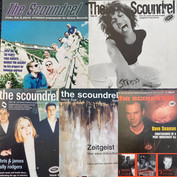








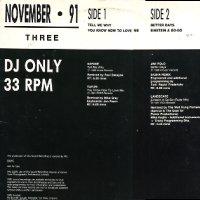


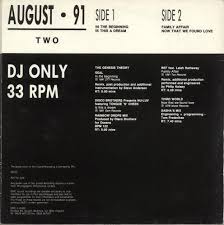
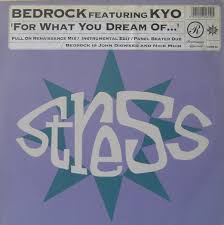


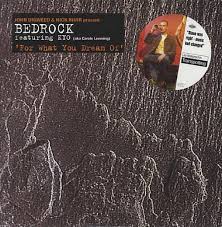

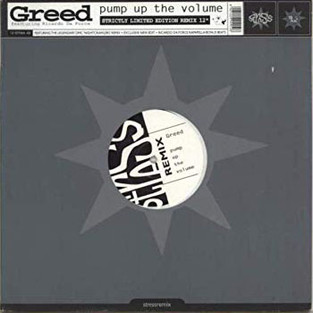



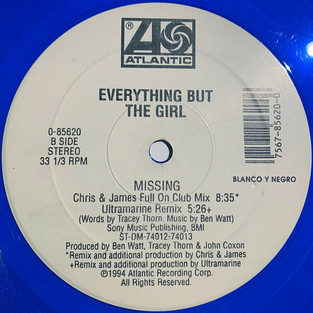







Comments